Anders Broebech
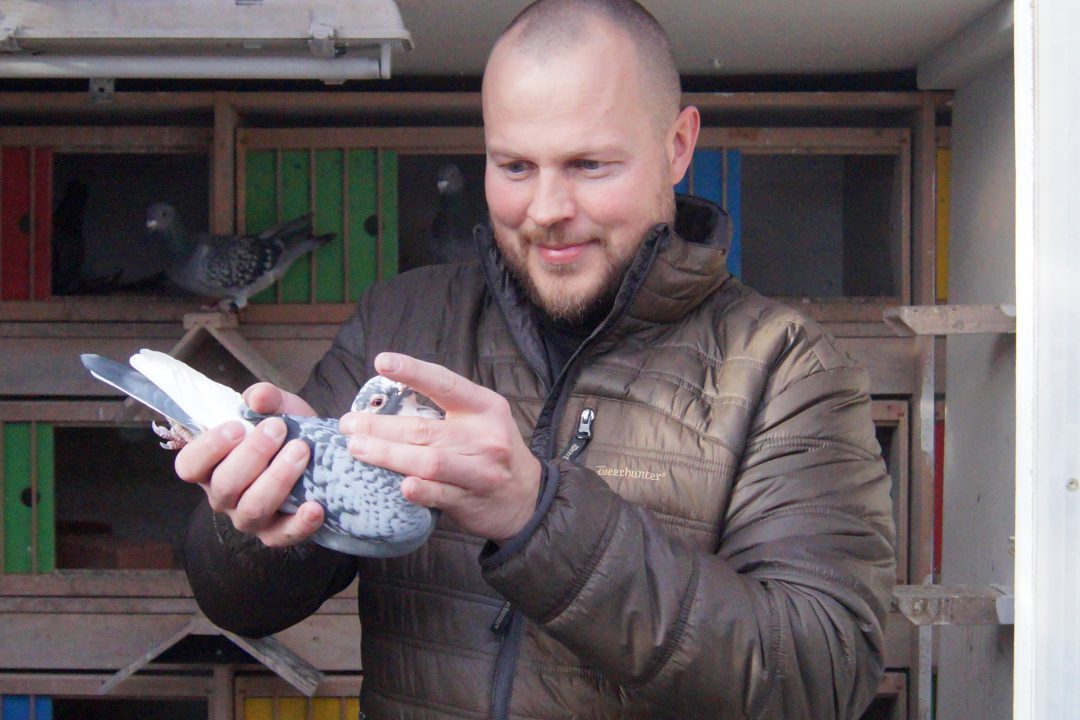
Winner of the 2017 Danish Championship: Anders Broebech, Skanderborg, Denmark.
Written by Michael Th. Larsen
For readers of “Brevduen” (Danish pigeon magazine), Anders Brøbech needs no further introduction. He has been in top of Danish pigeon racing for many years, and it’s hard to believe that anyone could top Anders regarding the interest for and commitment to this sport. He also takes part in all events in the racing calendar. Although Anders may be best known for his superb results at long and marathon distances, he puts a great deal of effort and preparation into ranking among the best, even in the short-distance regional club races – and succeeds!
Whenever you are in the company of Anders, you are left in no doubt that this is a sportsman who ‘lives and breathes’ racing pigeons. He is very keen on continually improving working methods, and it is particularly interesting to see that he is never afraid to try out new techniques – even if they fall into the category of ‘untraditional’. But, as they say, ‘if you follow in the footsteps of others, you’ll never get ahead!’
And this desire to test new methods quickly became the focal point of our conversation when I visited Anders to interview him for this article. From my conversations with Anders throughout the year and his two lectures, which I had the pleasure of attending this autumn, I already knew that I was going to see and hear something extraordinary.
‘Completely natural’ – system of care, feeding and a year in the life of the loft
This is Anders’ own name for his system of care and the way he races his pigeons. It is a somewhat ambiguous term and actually refers to a detailed system, which I will outline below. The essence of the system – and hence the name – is that the pairs always remain together, with no separation in the winter season. The birds live a completely natural life, and their moulting cycle is controlled by simple methods described later in this article.
Let us examine Anders’ account of the system. He explains that the new season begins after the last racing weekend in August, when the Danish national long-distance race is held with release from Munich 888 km in Germany. As soon as this race is over, all of the young birds are introduced to the loft, where the older birds remain and continue brooding. The pigeons are kept inside for five days, and then all the birds in the loft are allowed to exercise freely, from morning to evening, to accustom the youngsters to the loft for old pigeon. This process takes about a week, by which time the youngsters are familiar with the new loft. After this week, the pigeons are let out in the morning – they are forced out of the loft, and the entrance is closed for around 15 minutes. An hour later, they are called in for feeding. When the young birds are introduced to the loft, the numerous drinking bowls used by the pigeons during the season are replaced with just two seven-litre water dispensers. These are filled up each day, and this is the way to water the pigeons out of season. Drinking bowls are cleaned twice a day during the season. However, out of season, the dispensers are not cleaned, the idea being to strengthen the birds’ immune system. From the end of the racing season until 1 November, the pigeons are fed with a mix of ‘Broebech Mellem’ and the standard MVL (Mariman) sports mix with added barley, rapeseed and ‘Aftenkaffe’ (Evening Coffee) – a special blend consisting of a wide variety of oily seeds.
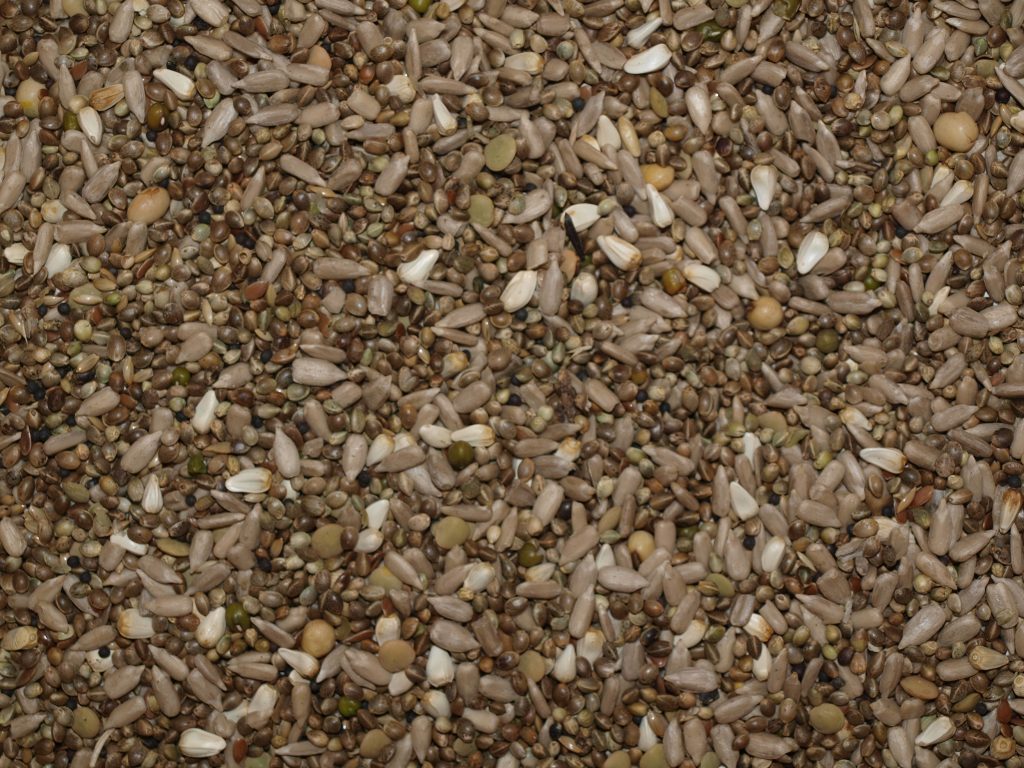
At the end of October, you need to watch out for hawks. In 2017, due to the rainy weather, the birds’ habit of pecking in fields and the moulting condition of the older pigeons, some birds were lost to raptors, and the pigeons had to be kept inside for several days.
From 1 December, the feed is replaced with a 50/50 mix of ‘Broebech Sprint’ and pure barley. ‘Aftenkaffe’ is still added to this basic mix, as are pellets and unshelled sunflower seeds.
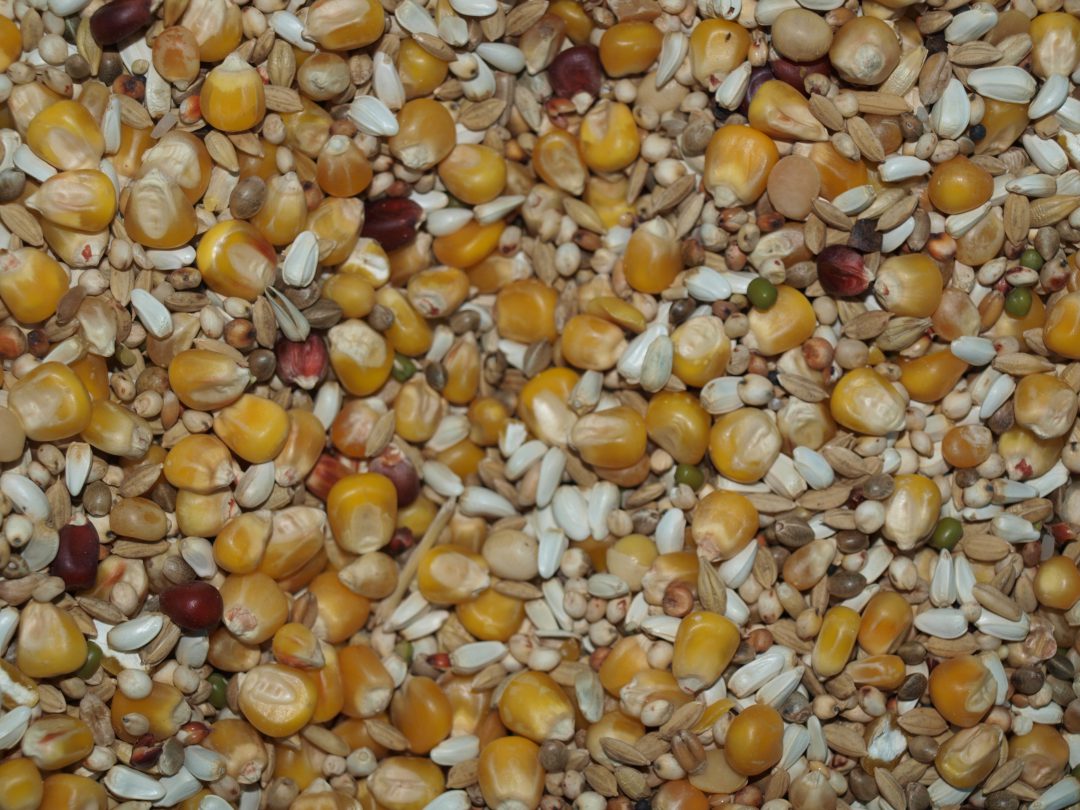
We should mention here that after the end of the season in early August, the birds have to make do with a two-week supplement of an oregano concentrate. From this time until 1 December, the pigeons are not given any kind of supplement, and Anders resolutely says that he prefers to spend his money on ‘Aftenkaffe’ rather than vitamins during the moult.
Around 10 January, the moult is finished, and strict discipline is introduced to the daily training flights around the loft. Up to this date, despite the closed entrance, flying has been voluntary for the pigeons. When the birds begin this forced flying, the feed ration is reduced to encourage them to travel further during daily training. This system improves the condition of the pigeons so they are able to fly at great heights above the loft for 45 minutes a day. Anders has observed that the pigeons fly just as high in August and September as they do in February, March and April. However, in October, November and December, they fly lower in the sky.
Readers will probably wonder how the paired pigeons are kept under control during this period, when it comes to egg-laying. This is done by removing all nest bowls on 1 October and opening up the front of the nests, so the pigeons don’t have any dark, cosy corners to brood in. This method is entirely adequate for preventing ill-timed egg-laying and premature start of the breeding and moulting cycles. In winter, the loft site is also very dark, and there are no streetlights to affect the lighting in the loft.
The daily training tosses around the loft continue until basket training begins, and the pigeons are in the air one hour a day. In very bad weather, however, the birds are allowed into the loft as soon as they land on the landing board, and they are not forced to fly for an hour.
Due to the daily training around the loft and the discipline this involves, the pigeons have become accustomed to raptors – and falcons in particular. If a falcon attacks, the pigeons now land immediately and enter the loft. The pigeons used to drop to the ground, almost in a vertical free fall, and were paralysed by these attacks. Naturally, this would reduce their chances of survival, but their behaviour is now more rational due to the regular training. It is extremely important to Anders that the daily training hour, as described above, is continued for six consecutive weeks prior to basket training. This is to ensure that the pigeons are in peak condition when they begin training with the car. The weather at the beginning of the 2017 season was very poor for training, and it was only possible to fit in ten training flights before the first race. The first basket training had to wait until 19 April.
Basket training usually starts from Vejle (42 km) or Middelfart (66 km). In 2017, Anders tried training the birds mid-week at actual race distances – for instance from Hannover (422 km). This clearly shows Anders’ energy and the hard work he puts into his pigeons, because these training sessions would start at one o’clock in the morning, when the birds were crated and transported. And he did not get home again until 4.15 in the afternoon! However, as this trial was not an unconditional success, he won’t be repeating it next season. Anders found that the distance and the timing took their toll on the pigeons and clearly diminished their enthusiasm for flying at home.
Daily training tosses around the loft involve releasing the birds early in the morning. All of the pigeons are driven out of the loft – even the ones that are brooding. Then the entrance is closed, and the birds train for around an hour. After this, the entrance is left open for another hour, during which time the pigeons can fly if they choose. In the evening, this routine is repeated.
Anders is considering cutting preliminary training to two or three flights. This is because all of the youngsters in his loft have participated in races from as far as Hannover – 420 kilometres – during the first year of their lives, so they are fully trained and routined as yearlings. If the young birds do not have this experience, they will need more training in the spring to prepare them for the first race.
In 2017, training flights were from Soltau 350 km and Hannover 422km, on Monday 22 May and Monday 29 May respectively. During the rest of the season, training flights were once a week from Middelfart, 66 kilometres away from the loft.
Regarding the racing season, we will now look at the feeding in more detail. The ‘winter mix’ described above is fed to the pigeons from 1 December and used until the first training session. As already mentioned, this mix consists of equal parts ‘Broebech Sprint’ and pure barley. A few days prior to the first training in April, this mix is replaced with 100% ‘Broebech Sprint’, supplemented with ‘Aftenkaffe’ every night at 8 p.m. This mix is used until the first race, when Anders switches to his feeding mix ‘Broebech Mellem’. In the morning, the pigeons are fed an amount equivalent to 90% of their daily ration, and at 5 p.m., the feeding troughs are filled with the remaining 10%. The morning feed is never given any earlier than 10 a.m., when the pigeons are called back from their morning exercise. In fact, the exercises are planned accordingly to ensure that the pigeons return at this time. That way, the pigeons have free access to feed throughout the day. The evening feed is at 5 p.m., and the birds are released for their evening exercise at 7 p.m. ‘Aftenkaffe’ is put out at 8.15 p.m. and once more at 9 p.m. The day ends at 10 p.m., when the pigeons are served peanuts and hulled sunflower seeds. Any leftover feed will be finished by the pigeons first thing the following morning.
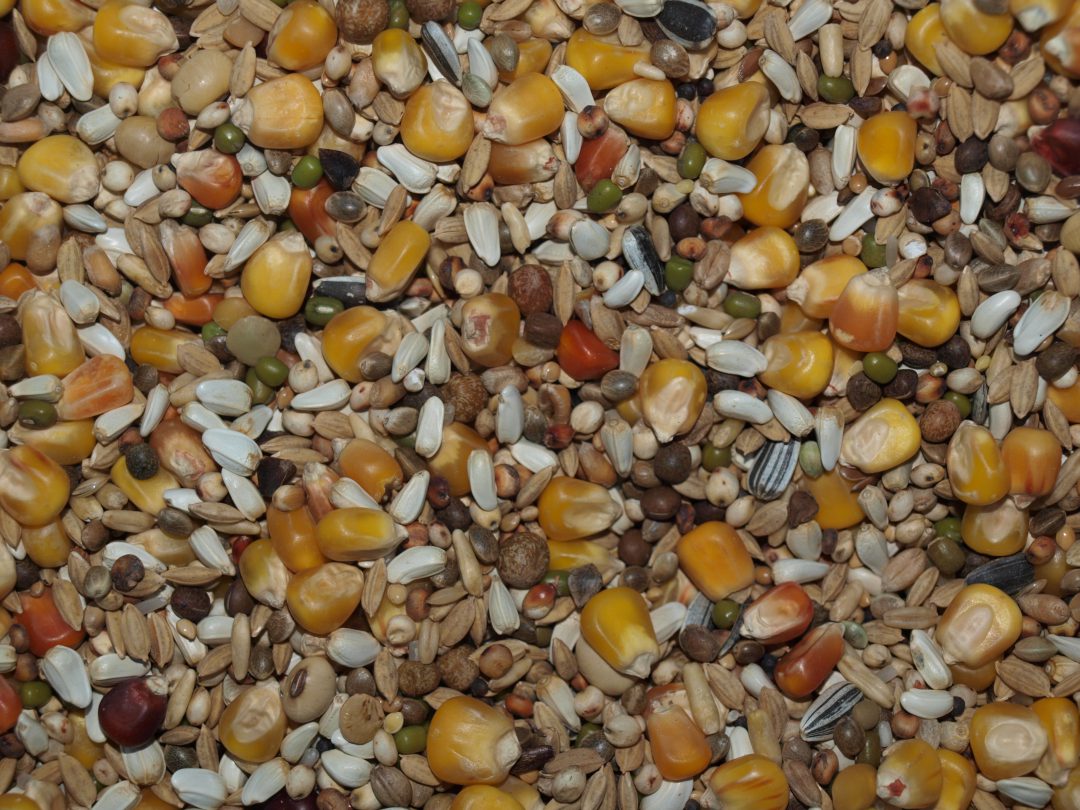
Building up the pigeons this way is very important in order to replenish their body fat stores for the demanding races. Anders explains how he conditions his pigeons to take in maximum nutrition. During the winter season, he feeds the birds very lightly and very sparingly – quite simply to teach them to ‘appreciate’ the good grains. You can tell that this produces perfect results, as the amount of grain Anders uses in early May is the same amount that he feeds on 1 August – and at that time of year, only half the number of pigeons still sitting in the loft.
With the start of the Danish national races, the basic feed switches from ‘Broebech Mellem’ to ‘Broebech Lang’, and this mix is used for the rest of the season. The only other change to the feeding plan happens in the week leading up to each national long-distance race, when 30% ‘Aftenkaffe’ is given as a supplement to the feed.
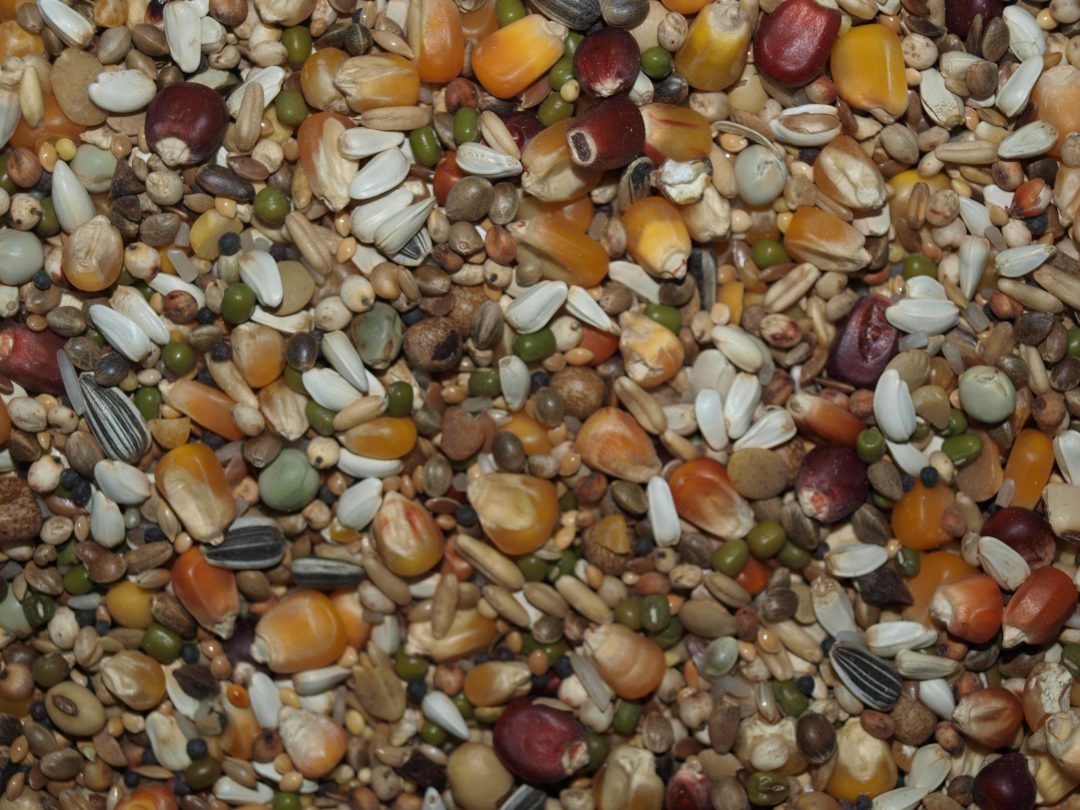
Anders stresses a very important fact: the feeding plan outlined here must be built up and prepared throughout the year as described above. In other words, deciding to introduce this plan halfway through the season is not an option. This is a crucial point for Anders and the whole idea behind his feeding plan – to make the pigeons take up as much energy as possible from their feed. As part of their conditioning, this is achieved through a slow build-up from ‘zero per cent’ on 1 January until their maximum intake at the start of August, when racing from Munich takes place. Anders adds that he is happy for the pigeons to eat maize, as this produces the energy required to eat more of the fatty feed. Besides, correct and ample replenishment of the fat stores helps to minimise any loss of pigeons during the more demanding races. Anders also comments on the use of pellets and peas in the feed mixes. Pellets are not used in racing mixes due to their very low energy content, yet they are thought to be an excellent winter feed. Likewise, peas are not used in great amounts – only in mixes for the long-distance birds, and then no more than 3%. Peas are very demanding for pigeons to metabolise and require too many carbohydrates. However, protein is an important nutrient for pigeons, and this supply is covered through soybeans, beans and pulses as well as protein powder.
From 15 April, the pigeons are fed a supplement – a special blend of various products, which are added to the grain. This blend consists of ‘Aktives Eisen’ (iron) and ‘Tollyamin’ from Tollisan, a supplement product of amino acids and vitamins. These components are mixed into the grain at night – sometimes with the addition of liquid vitamin B and ‘Sedochol’ later in the season. The blend is then left to let the products dry into the grain overnight. The next morning, the treated grain has liquid linseed oil added. This oily grain is then mixed with various powders: a chlorophyll-containing product made from wheatgrass, fresh water algae and freeze-dried beetroot. Called Broebech-Powder and Broebech-protein powder. As a word of warning, Anders says that you should only use vegetable-based proteins, never animal proteins containing milk sugar, as pigeons are lactose-intolerant.
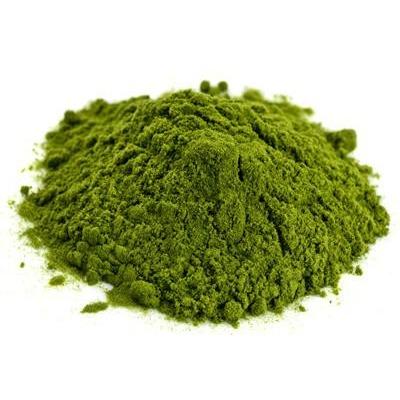
This mixture is added to the grain daily, except on days when the pigeons are given some type of medication. Anders adheres to the principle of administering all medication on the grain, always combining it with the ‘Tollyamin’ product mentioned above. Another important point in this respect is that he only uses medical products indicating a specific dose per pigeon, in order to give the correct amount and above all to avoid overdosage.
Speaking of medication, NONE whatsoever is given to youngsters or breeding birds. This also goes for treatment against canker, which is used by the majority of pigeon fanciers. There is clearly no need for this here, as his loft has seen no outbreaks or problems related to canker in the last 10 years.
However, the youngsters and breeding birds are given a natural supplement called ‘Dosto-ropa’ – a strong oregano extract – and this has had a significant positive effect on their overall health.
And now for an issue which is highly relevant to most of us, considering the huge challenges posed by young bird sickness in recent seasons: Anders has never had a case of young bird sickness in his loft. But how has he managed this? Read on to find out.
Two weeks prior to the young birds starting their first training, they receive a pH regulator in their drinking water consisting of various agents. The following components are added to each litre of drinking water: 10 ml of ‘Tollyamin’; 5 ml of pH regulator; 10 ml of ‘Quick’ (iodine/iron); 0.3 ml of ‘Dosto’, and 10 ml of ionised water (Rop-Adeno). These are all supplied by Schröder-Tollisan. This mixture is used every day until the Danish young bird races take place. Apart from this control of the drinking water, Anders also mentions that late hatches in the loft have a positive effect on the bacterial flora, and this may also contribute in some way to keep the youngsters clear of the dreaded young bird sickness. Something else that could perhaps explain the high resistance found in his youngsters is that Anders takes a relaxed approach to their movements around the loft during the first part of their lives. During this time, the young birds – along with the late hatches – are allowed to peck in the fields, and this may also help to strengthen their immune systems. Regarding the young birds, Anders also mentions that when it comes to minimising losses, he has found it useful to start their basket training when they are just eight weeks old, with very short flights from two to ten kilometres.
Natural pigeons and their cycle
When Anders explains his method of caring for the pigeons, many of us are curious to know how he manages to control the moult, considering that pairs are together all year round and live a completely natural life ‘as a family’. First of all, Anders aims to push the date when the birds lay their first clutch of eggs in the springtime to make it as late as possible. In 2017, this was on 15 March, and it is only at that time that the pigeons are provided with nest bowls. In 2018, the first egg was laid on 25 March, possibly due to the very cold weather. To delay the moulting process, lights are turned on in the loft from midsummer (23 June) from 4.45 a.m. until 11 p.m. This keeps the days at the same length and helps to slow down the onset of the moulting process.
As a priority, the aim is for the yearlings to be the first to have squabs, as experience shows that the rearing of young strengthens their attachment to the nest and their general motivation to follow the natural system. Also, it is often found that the yearlings which are then raced from sitting on 10-day-old eggs, after having reared their first clutch, are very keen in the races. Practically speaking, the first clutch does not produce a lot of squabs, because the eggs have gone cold during the many preliminary training sessions. The older pigeons are not allowed to hatch young until after 1 June. Obviously, the nest conditions are carefully planned for those pigeons set to participate in national races, by counting back from the release date and the bird’s ideal nest condition to the day when the nest must be cleared. However, no such planning work is done for any of the other pigeons – they will be released according their form on the day. Anders uses a lot of little tricks to motivate his pigeons, and his efforts to come up with new methods are ongoing. Placing a squab in the nest on a Tuesday evening or removing the eggs from a pair on a Monday have turned out to be efficient ways of motivating the birds. Likewise, pigeons that can be kept on their eggs for longer – up to 30 days – may be very highly motivated. There is never more than one squab in the nest during races, and Anders says that when it comes to squabs, he has not had much luck using pigeons whose eggs have just hatched.
As for the ideal nest conditions, Anders is absolutely certain that these are 10-day-old eggs or 10-day-old squabs. This is backed up by his two national wins with hens sitting 10-day-old eggs, while he has also gained this title once with a cock sitting a 14-day-old youngster. Similarly, he has managed on one occasion to bring home the national title with a hen who had her eggs removed from the nest on the Monday prior to releasing.
Building the stock and the breeding efforts
It goes without saying that to reach such impressive results as Anders has brought home over the last 20 years, you need to have quality pigeon stock. Anders refers to the basic bloodline – or rather bloodlines – as the two ‘Broebech lines’. These are two separate lines: ‘the check line’ and ‘the blue line’.
The check line (Checker-Broebech) was started by Anders’ grandfather Carl Andersen in Allingaabro, Denmark, and is built around the foundation pair ‘88-192 Cock’ and ‘93-573 Hen’. This pair features in the pedigree of four national winners from Anders’ loft, and it is in those very hard races that the check line has proven its strength, as he reckons these pigeons are too slow in all other races. From this foundation pair, Anders points out four particular birds – ‘02-362’, ‘01-572’, ‘06-847’, and ‘06-848’ – whose breeding shows that they carry on the foundation genes in the most eminent way.
The blue line (Blue-Broebech) is represented by foundation birds DAN-93-2, 93-632, 99-812 and 05-702, the old Delbar hen 86-329 and her offspring, the 97-300 hen and the 91-139 cock. In fact, 05-702 is the result of pairing 99-812 with an offspring from 91-139, so this is by all means a firmly established line.
Unlike the check line, which is bred for marathon racing, the blue are proper all-round pigeons, capable of winning young bird races and sprints, but their speciality is the one-day long-distance races. Crosses between the check line and the blue line have turned out to be excellent in national long-distance races, while crossing the blue with Flor Engels pigeons have produced several top performers in sprint and middle-distance races.
That the foundation birds from 1993 are still relevant was seen most recently in 2018, when ‘93-2’ featured as the great-grandfather of Christian Lund Andersen’s impressive national winner in the very difficult final from Munich 910km.
Anders has also concentrated his efforts on birds from Flor Engels – the name that has dominated Danish pigeon racing since the turn of the millennium. Not only that, but Anders is likely to be by far the greatest investor in these pigeons, focusing on purchases very close to the Engel foundation birds. Through the years, his purchases from the Belgian top loft amount to more than 100 birds, which include 5 direct offspring of ‘De 231’, 7 direct offspring of ‘De 178’, 5 offspring of ‘De 734’, and 4 offspring of ‘De Argenton’. These pigeons have also contributed to great results on the longest distances. One example is the ’11-2081’ hen that was national winner from Limburg 644 km in 2014 – her sire is a Engels pigeon grandchild of ‘De Argenton’.
In 2009, Anders invested in pigeons from Jos De Klak, making a total purchase of 30 original birds and 20 birds bred from other original Jos De Klak. Among these pigeons were two direct sons of the legendary ‘De 613’. De Klak pigeons are great at speeds from 800 to 1,400 mpm, and so far the best results with these birds have been achieved in national long-distance races and very difficult races. This includes the breeding of a semi-national winner from Würzburg 707 km. with 50% Jos De Klak blood.
As a marathon specialist, Anders has of course also been on the lookout for more classic long-distance birds. For instance, he has successfully introduced Van der Wegen pigeons and, not least, 9 original Chris Hebberecht pigeons. While the latter are not good in the hand, almost every one of them has bred winners – including the regional and semi-national winners from Karlsruhe in 2017 – and the hardiness of these birds is a particularly important factor.
Janssen pigeons purchased directly from the breeder have also made a difference to Anders’ loft. These are the red type, and Anders reckons that they are almost impossible to lose during races. The semi-National winner from Giesen 622 km in 2017 was a yearling of this ancestry, and both the semi-national winner from Minden 427 km and the pigeon 14-4198 to reach third in the national race from Freiburg 910 km have their roots in this bloodline as well.
For the classic long-distance category, the most recent introduction is Jan Arden pigeons, with 30 birds purchased in 2014 and a further 20 in 2016 – these are from lines concentrated around the legendary ‘De Dolle’. In 2017, breeding has produced a regional winner from Antwerp, which is a cross between one of these Arden pigeons and the Hebberecht birds mentioned above. In 2018 a half Aarden/half Janssen was National winner from Freiburg 910 km. Very hard race 701 mpm.
As with everything else pigeon-related, Anders is highly ambitious and dynamic in his breeding work, which always involves experiments to a greater or lesser extent. Thus, he has also purchased Geerinckx pigeons via, and the five original birds have bred incredibly well in Anders’ loft – not to mention that they stand out by having an excellent build.
There is a definite strategy in the breeding work – top racers are always produced through crossbreeding, and as Anders puts it, ‘life is too short to be racing purebred pigeons’. He reckons that crosses, no matter their ancestry, can do well on all distances. The concept in his breeding work is based on very tough selection along the lines of ‘breed plenty – try out plenty – remove plenty’. Already at the time of weaning, 5 per cent of the youngsters are culled, and this share of ‘rejected’ youngsters will gradually become smaller, as the best birds are selected over a number of years. Alongside the crossbreeding, there is also some inbreeding with a view to further breeding. The inbred pigeons are subjected to even tougher selection, which Anders believes is absolutely crucial. These youngsters are also put through selection from 30 days old, when they are placed in an open aviary for two months. During this period, 25% are culled, and after a further two months, 10-15% more birds are removed.
The sportsman and his serious attitude
Anders is well known by most Danish pigeon fanciers, and you don’t need to be a great judge of character to realise that this is a truly serious sportsman. He is out to win everything – and he cuts no corners when it comes to achieving his goals.
Anders is passionate about one-day long-distance and marathon races, and these are his first priority. However, he also puts a great deal of effort into winning the sprints and middle-distance races. And, as his results show, he is doing rather well in these, too!
We have mentioned many times in this article that great results are not achieved by sitting still. Pigeon racing is a very high priority for Anders, and from 1 May until the Munich final, his pigeons take centre stage. He never leaves home to attend any other events during this period, and every day his aim is not to be away from the loft except for the six hours between 11 am and 5 pm. In season, he spends eight to ten hours each day working with the pigeons, but he also admits that his batteries are ready for recharging as soon as the season has ended.
If you are interested in more information about Anders’ loft, pigeons, methods, etc. you will find further details on his website: www.brdrbroebech.dk.
Many thanks to Anders for an inspiring and, as always, stimulating visit, and congratulations on the well-deserved win at the Danish National Championship!

